How to grow lantana for vibrant, bee-friendly blooms
It's a verbena lookalike with a bright twist...
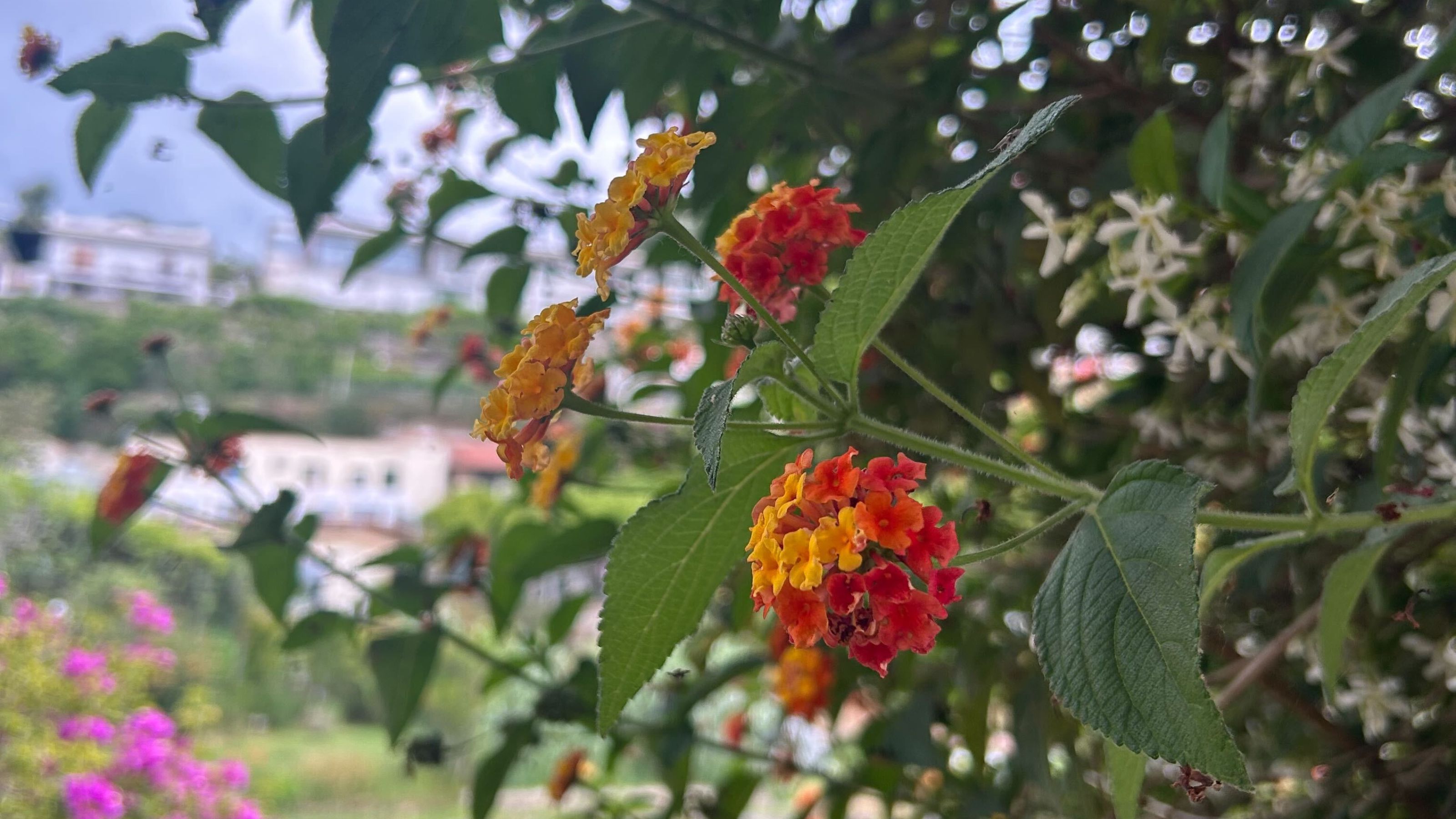

When I visited a thermal spa in Naples a couple of months ago, I kept seeing a beautiful flowering plant around the gardens: lantana.
If you’re looking for the best drought-tolerant plants for pots, it’s worth learning how to grow lantana. Similar to verbena, it produces delicate clusters of tiny flowers on long stems, but they’re often bright orange, yellow and pink instead of verbena’s signature purple blooms.
To find out how to grow lantana, I checked in with a few trusted garden experts – including Historic Royal Palaces’ growing team leader, who cares for Hampton Court Palace (the home of the National Collection of lantana!).
What you'll need
- A lantana plant, like Lantana 'Orange' from Thompson & Morgan
- Some peat-free compost if you'll be growing lantana in pots, like Westland John Innes No. 3 Peat-Free Compost from B&Q
- Fertiliser for pot-grown lantana, like Levington Natural Sulphate of Potash from Amazon
- Some gardening gloves to protect your hands, like the Showa Rip-Resistant Gardening Gloves 330 from Crocus
- Some garden snips, like the Spear & Jackson Garden Snips from Amazon
1. Give it plenty of sun
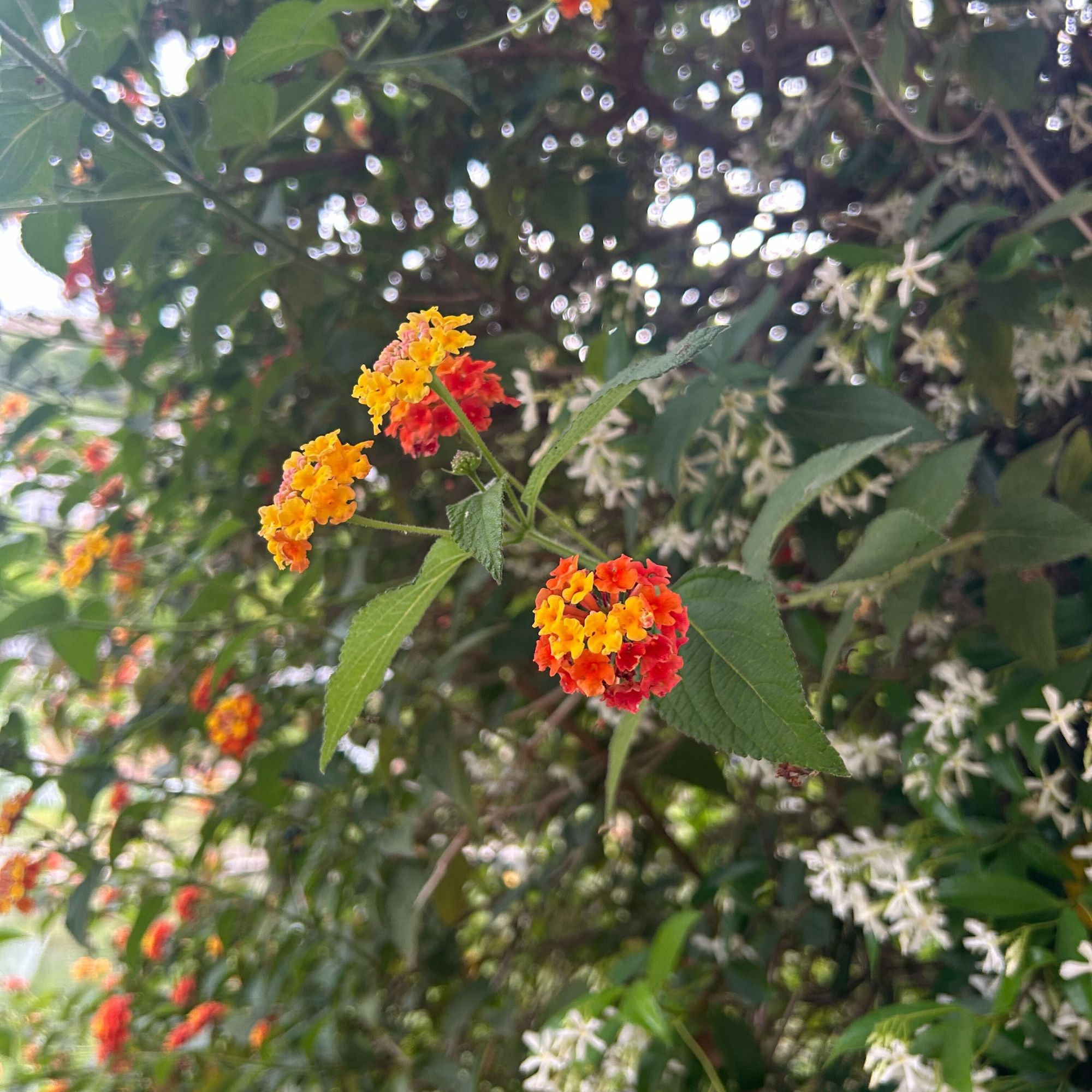
Above all else, lantana loves the sunshine, so it’s important to grow the plants somewhere that receives full sun – and if you’re familiar with the various types of garden shade, you’ll know that means at least six hours of direct sunlight a day.
‘They can tolerate some shade in the afternoon, but may not flower as much if planted in the shade,’ says Richard Barker, commercial director and garden expert at LBS Horticulture.
Lantana is toxic to dogs and other pets, though, so be sure to plant it out of reach of animals and small children. The plant can also irritate the skin, so it's a good idea to invest in a pair of good gardening gloves like the Showa Rip-Resistant Gardening Gloves 330 from Crocus.
2. Choose the right soil
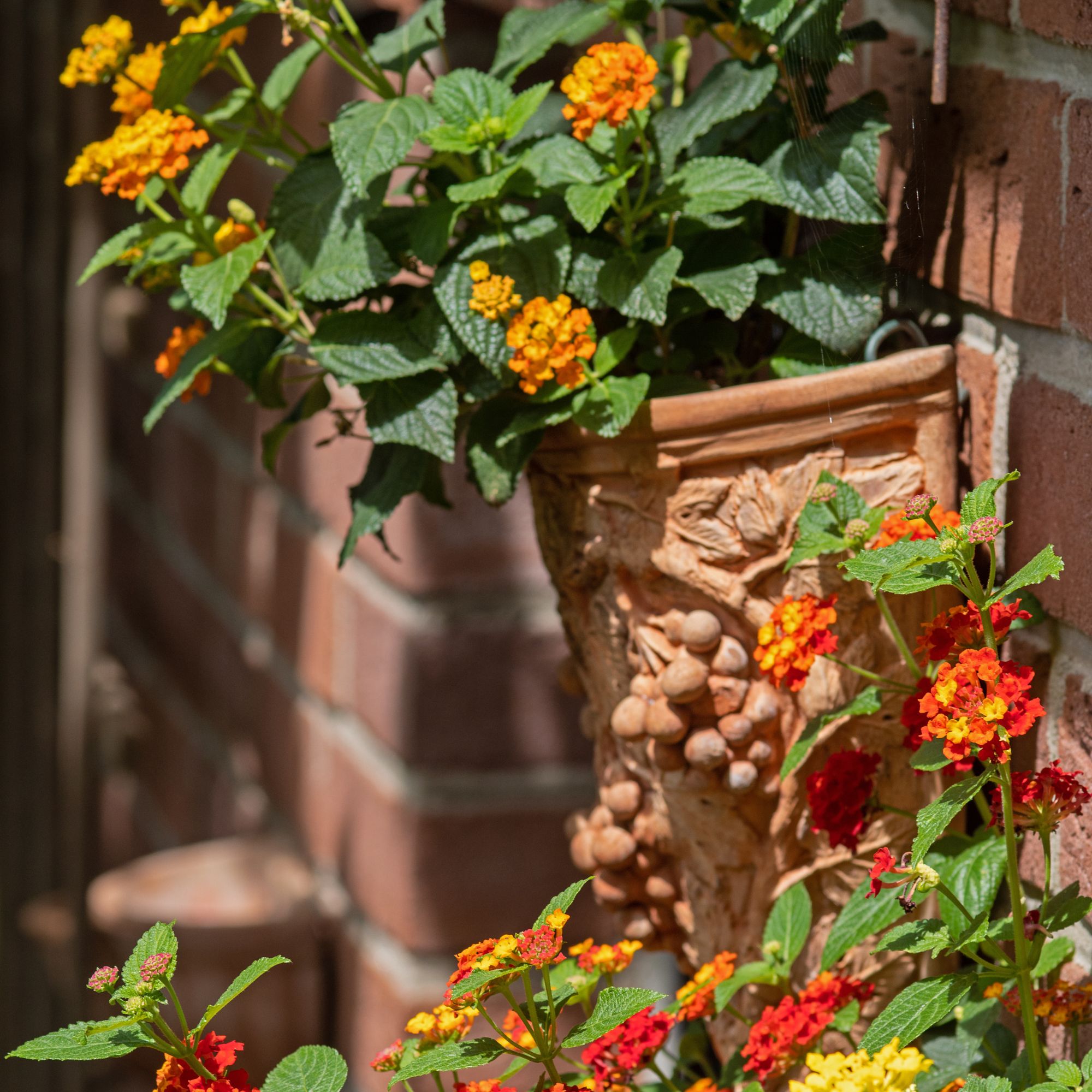
Other than that, lantana is a pretty unfussy plant. It thrives in a range of soil types, but performs best with plenty of drainage.
Sign up to our newsletter for style inspiration, real homes, project and garden advice and shopping know-how
‘Due to its love of the sun and tolerance for a wide range of soil types (as long as it’s free draining), lantana is perfect for pots and ideal for placing on patios and balconies,’ says Lucie Bradley, gardening and greenhouse expert at Easy Garden Irrigation.
If you do decide to grow lantana in pots, it’s worth incorporating some horticultural sand like Westland’s Potting Grit from Amazon to increase drainage.
Hampton Court Palace is home to the National Collection of lantana, so I spoke to Martin Einchcomb, Plant Specialist & Growing Team Leader at Historic Royal Palaces (the independent charity that cares for Hampton Court Palace).
‘Lantana perform better in pots in a peat-free compost mixed with loam,’ he advises.

Martin Einchcomb is the Plant Specialist & Growing Team Leader at Historic Royal Palaces (the independent charity that cares for Hampton Court Palace). He is responsible for the day-to-day management of the Nursery and the plant collections and has worked at Hampton Court Palace for nearly 45 years.
© Historic Royal Palaces
3. Dig a big enough hole
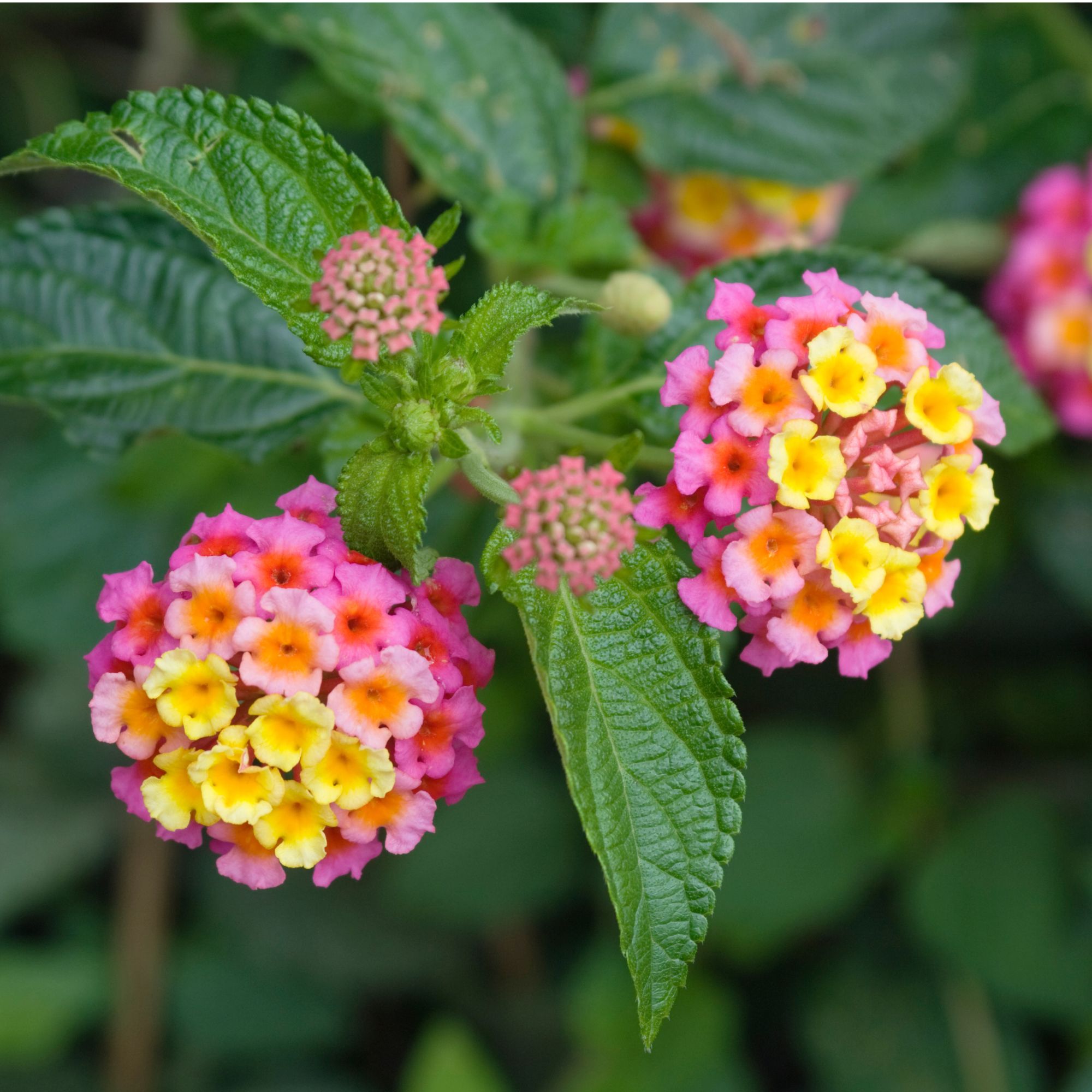
Once you’ve decided where you want to grow your lantana plant, you can get planting.
According to LBS Horticulture’s Richard, you’ll need to dig a hole that’s twice the width of the plant’s rootball, ensuring it’s large enough to accommodate the plant’s roots.
‘Remove the plant from its container, and gently loosen the roots,’ Richard continues. ‘Place it in the centre of the planting hole, and fill with soil.’
Then, give it a good watering to help the soil settle around the roots. Richard also recommends mulching at this stage to conserve as much water as possible.
‘Apply a layer of mulch around the base of the plant, as this will aid moisture retention and suppress weed growth,’ he explains.
RocketGro's Peat-Free Magic Mulch from Amazon is a great choice.
4. Know when to water
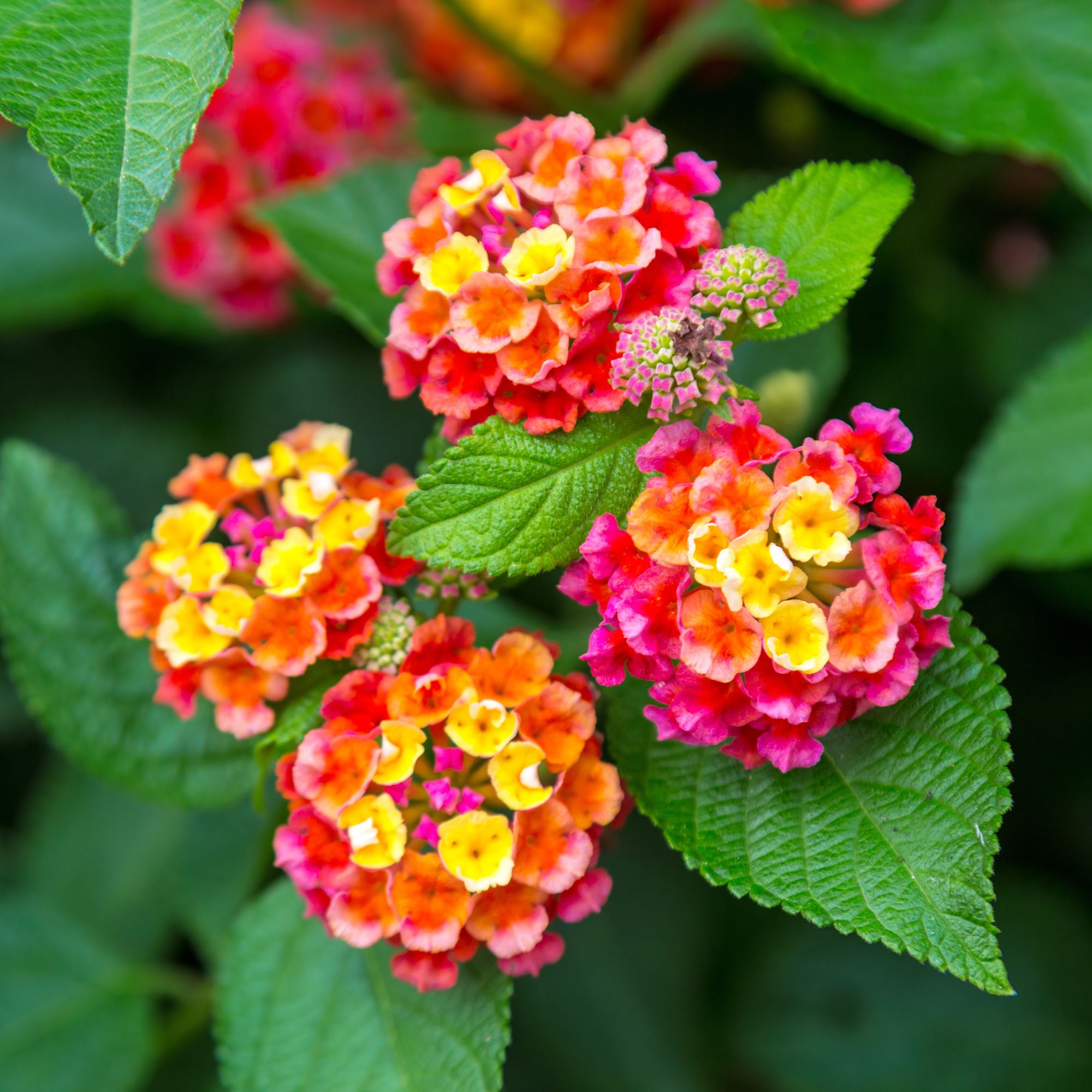
Lantana is one of the best drought-tolerant plants out there, but you’ll need to be a little more attentive during its first year of growth.
‘Although in its first year you will need to keep it consistently watered, once it’s established a good root system, it can cope well for long periods without water and even continue to bloom,’ explains Lucie.
Potted lantana plants will need watering far more regularly. It’s always worth checking the top couple of inches of the soil – if it’s dry, it’s time to get the watering can out.
5. Winter protection
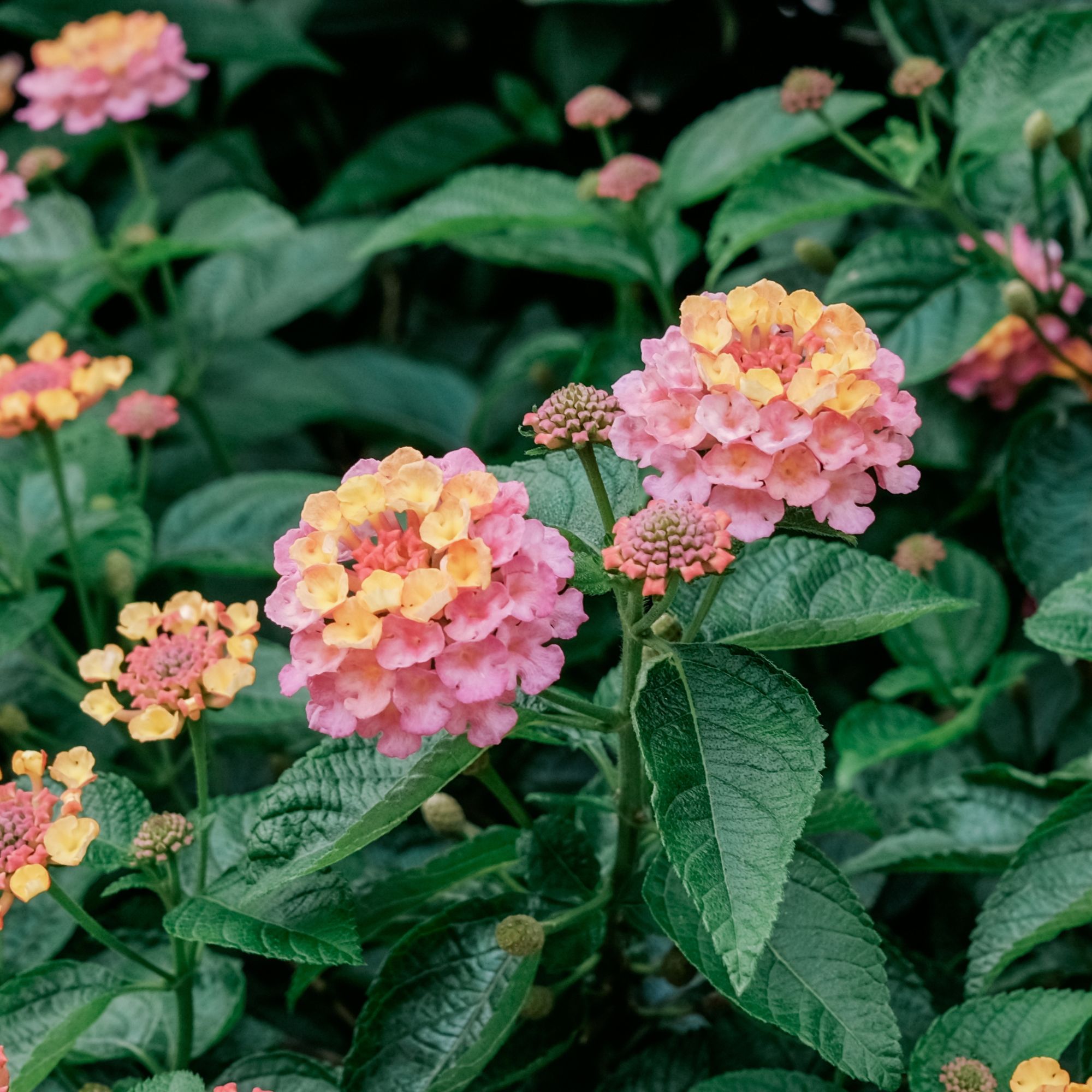
Sadly, lantana isn’t hardy, which means gardeners in the UK often treat it as an annual and discard the plants at the end of the year – but if you’re growing lantana in pots and can move the plants inside during the winter, they might bounce back next year.
‘Lantanas are a glasshouse tender perennial,’ explains Martin. ‘The ideal growing conditions are at a temperature of around 10 to 12 degrees Celsius over the winter months, and during summer they prefer the hot, sunny climate.’
6. Feeding
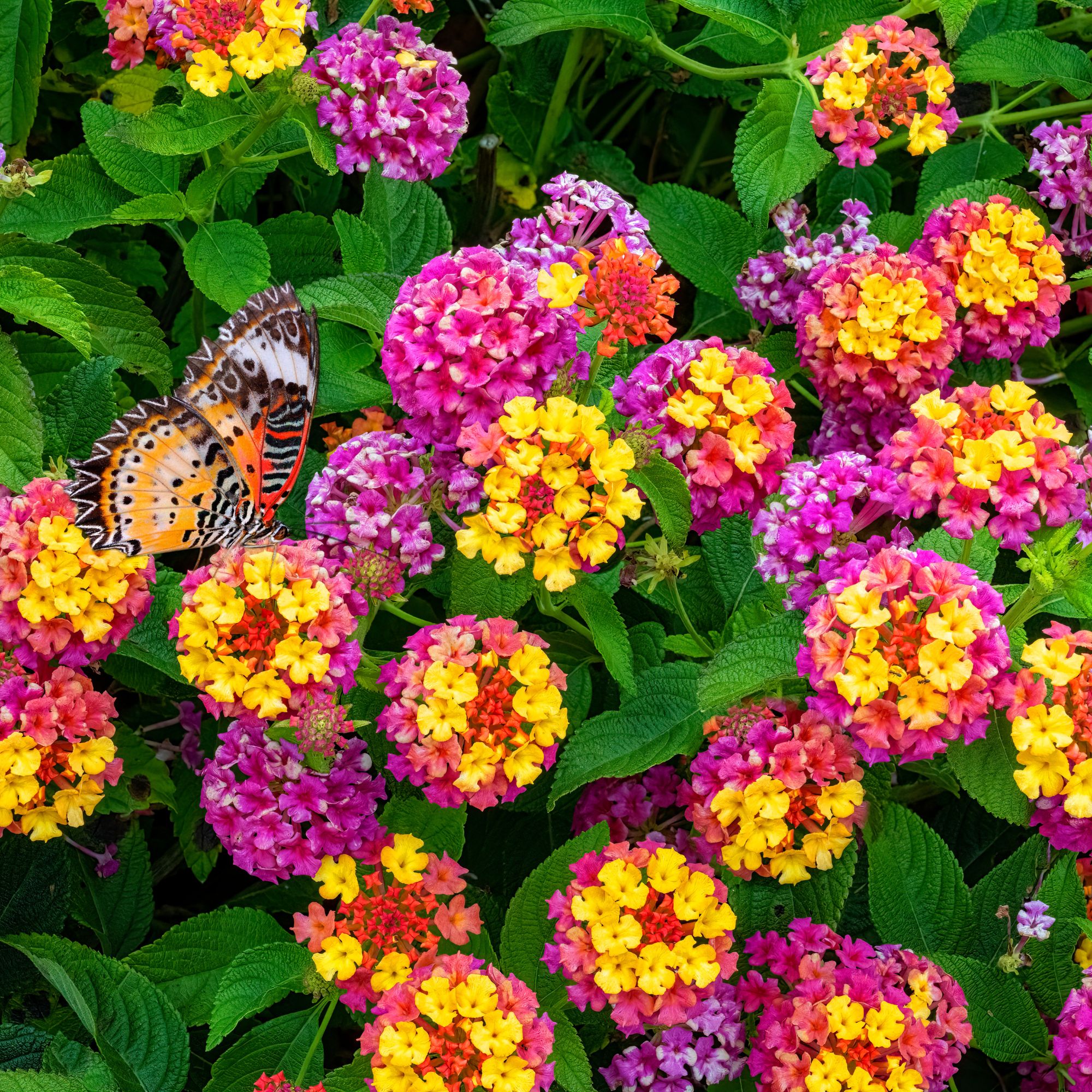
If you’re growing lantana in pots, fertiliser is key to successful flowering.
‘In pots, they will need feeding on a weekly basis with a high potash feed to help produce a good flourish of blooms,’ explains Martin from Historic Royal Palaces.
Levington Natural Sulphate of Potash from Amazon is a good choice. During the winter, though, their feeding requirements are slightly different.
‘They can become a little tired looking over the winter months, so a high nitrogen feed is best used to promote growth,' says Martin.
7. Pruning and deadheading
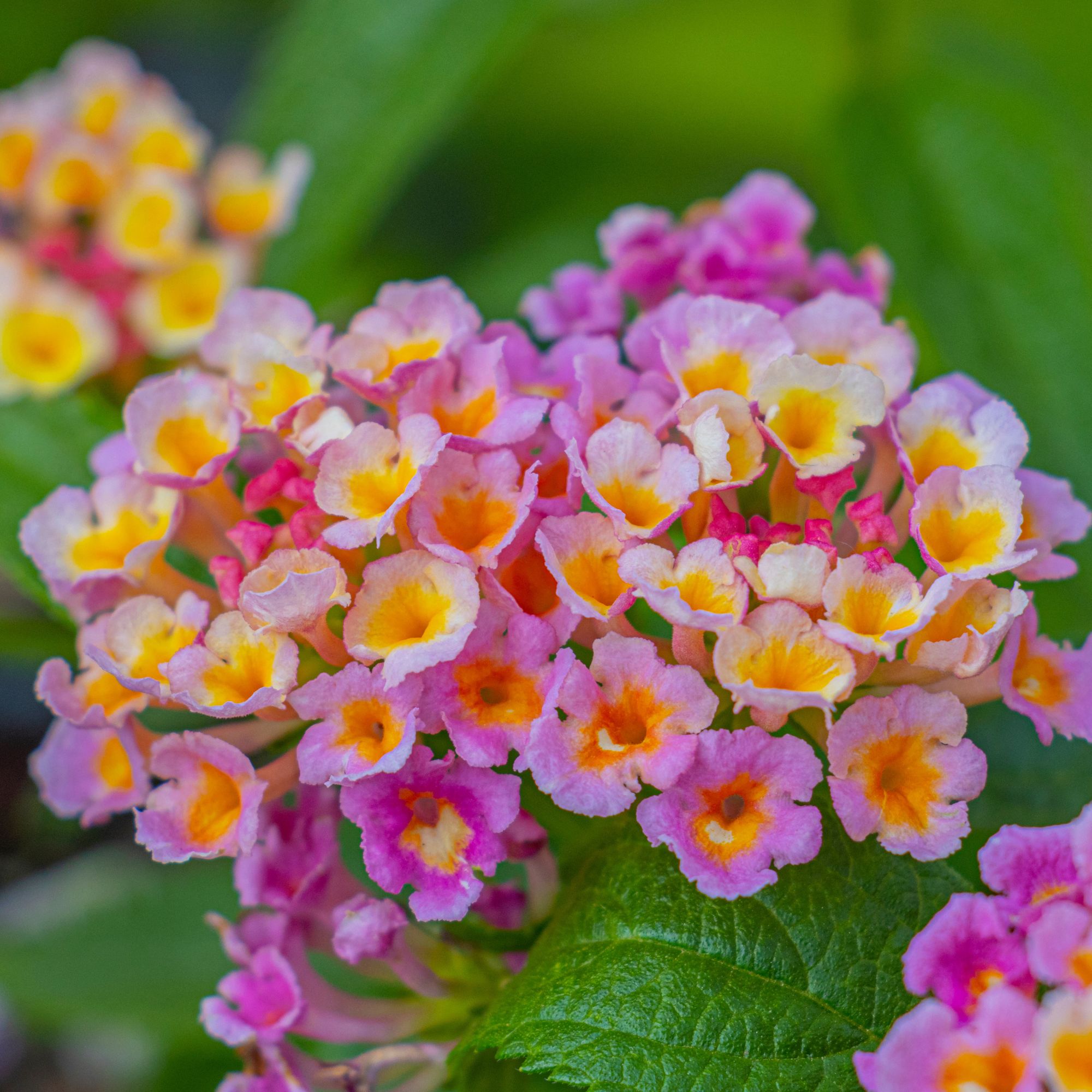
It’s worth deadheading lantana to keep your plant flowering throughout the summer months (and even into the autumn!).
‘This not only keeps the plant looking vibrant and tidy, it also encourages the production of more blooms rather than the plant focusing its energy on producing seeds,’ explains Lucie.
Just make sure you know how to clean garden tools properly to prevent the spread of diseases between plants – it’s one of the worst deadheading mistakes you can make!
If you’re growing lantana as a perennial in a greenhouse, it’s worth learning how to prune it.
‘If the plants become too large, they can be easily pruned back and even take to a good hard prune in the glasshouse in early spring,’ says Martin from Historic Royal Palaces. ‘This promotes new growth and buds for flowering.’
I couldn't wait to learn how to grow lantana when I came back from Italy. It's a fuss-free plant with beautiful displays – just make sure you keep it out of children and pets' reach.

Sophie joined the Ideal Home team as Gardens Editor in June 2024. After studying English at Royal Holloway, University of London, she began writing for Grow Your Own, which spurred on her love of gardening. She's tried growing almost every vegetable under the sun, and has a soft spot for roses and dinnerplate dahlias.
As Gardens Editor, Sophie's always on the lookout for the latest garden trend. She loves sharing growing hacks for every space, from herbaceous borders to balconies.